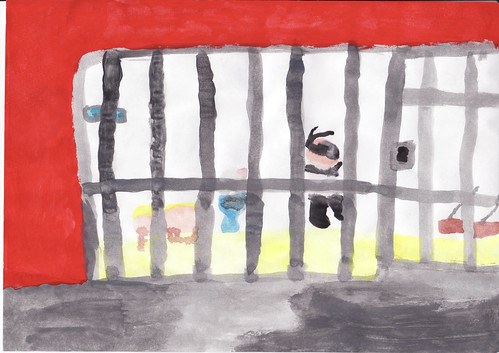 The word ‘penalized’ or ‘penalization’ represents real horror in online business owner’s eyes. It’s like receiving a straight-to-jail card, and you don’t know why you got it…
The word ‘penalized’ or ‘penalization’ represents real horror in online business owner’s eyes. It’s like receiving a straight-to-jail card, and you don’t know why you got it…
Those words are not cool while talking about Google and your site traffic. Often, the words may actually mean a “filter” of sorts – which feels less intense, but may have signficant consequences, none the less.
There are key things to look at when web traffic drops happen, I’ll cover that shortly. It is something we either have dealt with directly, or tried to help others with (as an SEO traffic consultant). Much like the word ‘problem’ (negative) should really be looked at as a ‘challenge’ (opportunity for learning), there are effective ways to find out what happened about your web traffic drop, and how to fix it. Don’t despair, and definitely – breathe.
You may indeed have an issue with the website itself, a particular page (pages), and/or directly with a keyword phrase. The process of recovery starts with some basic tests, and possibly some reverse engineering (on the human side too), tracking and real tactics.
Here are 6 important areas to review for traffic / rankings drop.
The web traffic drops process: How to get your website traffic back.
STEP 1: Company / name still there?
Is your site still listed within Google? Quick test: Type your company/business URL into Google, and variations of it, including the whole company name. Try also the site: command. (See Google syntax cheat sheet). Look to see if you are showing up, and page through, and look in the first 2-3 pages to start. Make sure to run tests, and compare with the 2 other search engines (Bing, Yahoo) as well.
STEP 2: Logs / Analytics to track event(s).
Open a wider span in your date range. Locate the time / date when the drop happened, and make sure you only look at organic results (not paid). Review across multiple search engines to see if there is a pattern. We are looking for a sudden drop. You should know your top keywords (heads) and the ones bringing your biggest sources of traffic. Find out where your positions for those keywords were back then, versus now (you keep some ranking records, I’m sure). Think back, and check your logs for any changes that may have been made around that time. Make note of quick fixes. A ‘robots’ file check may reveal a ‘Disallow’ directive you didn’t want. (Easy to make that mistake if moving files from a development server, for example)
STEP 3: Page / scripting / code.
You should also look at “top content pages” driving traffic. Review the code and tags on those pages, especially if your discussions reminded you of changes made – around the same time. Look at robots tags and header information. You can use seo-browser.com for a more in-depth look (advanced mode). Run tests within your Google Webmaster Console and page checks as well. Review the Google cache – “text version” of your page, to see if it matches, and if it looks ok. A natural approach to code and tags works best, don’t try to analyze (tools) to over-optimize a page. Too much, is “too good”, and can appear spammy.
STEP 4: Architectural / navigational / server issues.
Ensure that your pages are spider-able. Having sitemaps will help – make sure they are “working” – both HTML and XML (to lesser degree). Make sure you have the proper canonical URLs configured. Have each page designated as the ‘original’ to itself. Avoid duplication. And, you can determine the most valued page by looking at back links, inline with your analytics. Some webmasters using CMS’s that are not ‘clean’ in the way of handling unique pages, will or can create duplication of pages as time goes. (although typically not associated with a “sudden drop”, just wanted to mention it). Finally, are you seeing a spike in 404 error pages versus the previous period? Make sure to fix these, and please run your site on a healthy hosting/server environment. Page speed is a signal, although not the first thing I’d look at.
STEP 5: Content and links.
I hope you have not used any black hat SEO tactics (obvious problems). However, you may not have known that the velocity, frequency, and overall site activity is being looked at by Google as “signals”. Make sure you add pages and links naturally, over time. Try to avoid spikes in your activity. Of course, it matters if your site is aged (several years), versus a couple of months old. Think of it this way: you are building and earning trust in Google’s eyes – and you are being ‘watched’. On that note, buying links is a dangerous affair, unless you know what you are doing. You’ve seen the news, Google hates that (unless supplying rel=nofollow – but even then…). Make sure the content is your own, and not scraped.
STEP 6: Trending / Marketplace information.
When I see drops, I like to search the various forums, call my friends in the business, and even check for trends for keywords. If you have seen drops, they may have seen it for the marketplace as well. Google trends is another tool to check.
Finally, don’t forget to build quality – from the content itself, to the links that help support the authority and trust of those pages – which in turn, helps your site.